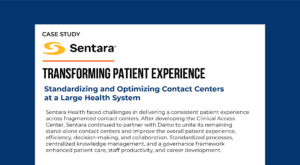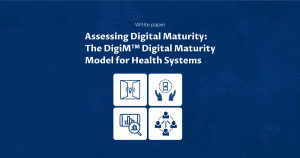Virtual care technologies will bring value to health systems
– Ashish Atreja, MD, MPH, Chief Innovation Officer, Medicine, Mount Sinai Health System
Our recent guest on The Big Unlock podcast was Dr. Ashish Atreja, Chief Innovation Officer, Medicine at Mount Sinai Health System. Dr. Atreja discussed how virtual care model will bring value to healthcare with Paddy Padmanabhan, CEO of Damo Consulting. Dr. Atreja is also the founder of the Network of Digital Medicine (NODE.Health). NODE.Health is a nonprofit network of societies, foundations, and health system associations to promote evidence for digital health and enable transformation.
Listen to the full conversation
“We combine the best of digital health with the electronic health record to make it a wholesome, patient-centered experience for healthcare. One of the major gaps we see in our ecosystem is there is so much going on in digital health. So, we created this concept of evidence-based digital medicine or EMDM where we can trust really what is working andwhat is not working.”
– Dr. Ashish Atreja, Episode #49
COVID-19: Biggest transformation agent for the healthcare industry
Digital transformation is accelerating, and the focus is primarily on telehealth and digital consumer engagement today. Dr. Atreja says that due to COVID-19, in-person visits shifted to video visits, as a result telehealth became mainstream.
“COVID has been the biggest transformation agent for us, I would say the progress we saw which would take a few years happened in months. The transformation technology has been happening, access was a big issue and initially we got it to rise because of the bots. The bots were used to screen patients because we did not have much triage capacity. But then because we had to convert rapidly our in-person visits to video visits, telehealth really become mainstream. Post-COVID or the tail of the COVID will take us to a world that is going to persist. If telehealth is the first peak of digital medicine in COVID, I feel the second peak is going to be digital monitoring.”
– Dr. Atreja
The final interoperability ruling
Dr. Atreja believes that many patient-centric applications will leverage the final interoperability ruling. It will create a seamless and improved patient experience which will build an opportunity to create a whole ecosystem around it.
“I think that we are going to see a lot more applications, patient-centric applications, leveraging interoperability. And I think we have been waiting for that for a long time. That would become much more mainstream now and there will be a value-add. I think the data exchange between EHR’s to EHR’s will still be less. But at least the patients will have it, hopefully, and then they can be a whole ecosystem that has to be developed around it.” – Dr. Atreja
Remote monitoring: The dominant way to manage patients
We are seeing a noticeable shift to virtual care models. Virtual care technologies such as telehealth, digital front doors, remote monitoring, digital medicine are bringing a lot of value to the health systems by decreasing cost, increasing efficiency, and improving outcomes.
“I think remote monitoring is probably going to become the dominant way to continuously manage patients. Till date remote monitoring has been suffering from two things. One is the patients may not have an easy way to set it up and link to the Wi-Fi. But with 4G devices, which can implement hardware, we do not have anything to test or connect and this makes it very easy. The second was reimbursement for that. So that is why this was limited mostly to ACO or post discharge. Now with reimbursement coming from Remote Patient Monitoring and Chronic Care Management codes, I think we are going to see a lot of more mainstream implementations of that. I think any chronic disease patient as cardiovascular to others will require digital monitoring.” – Dr. Ashish Atreja














